Solomon and Contradictions - Lesson 1
Mike Ervin
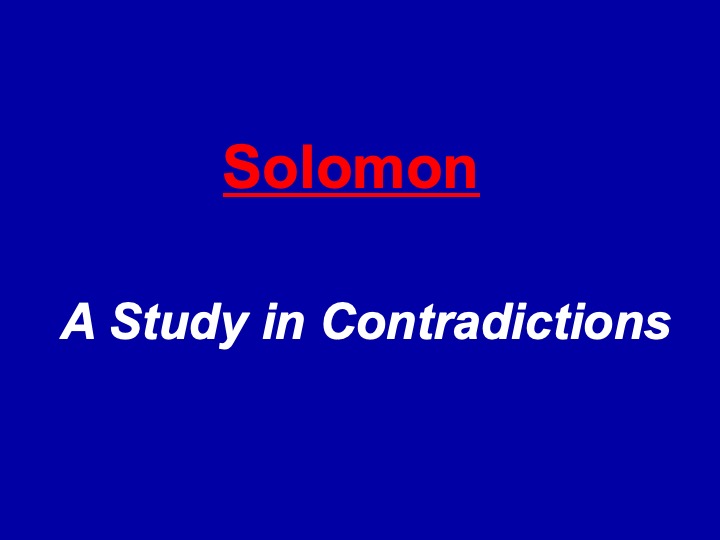
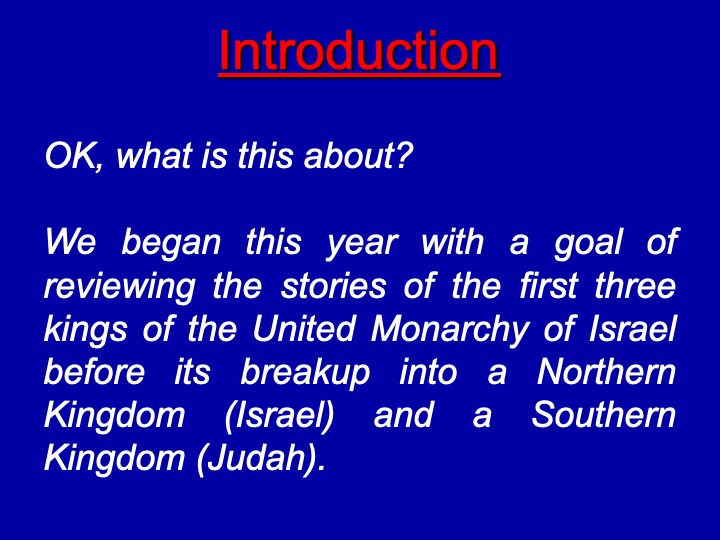
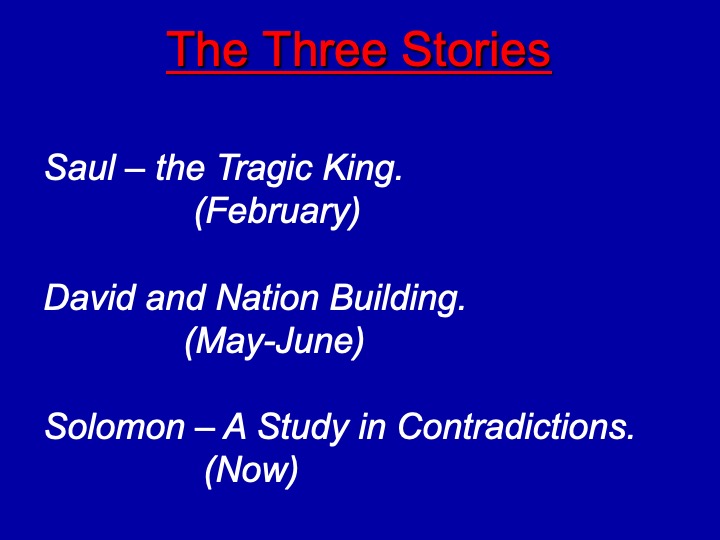
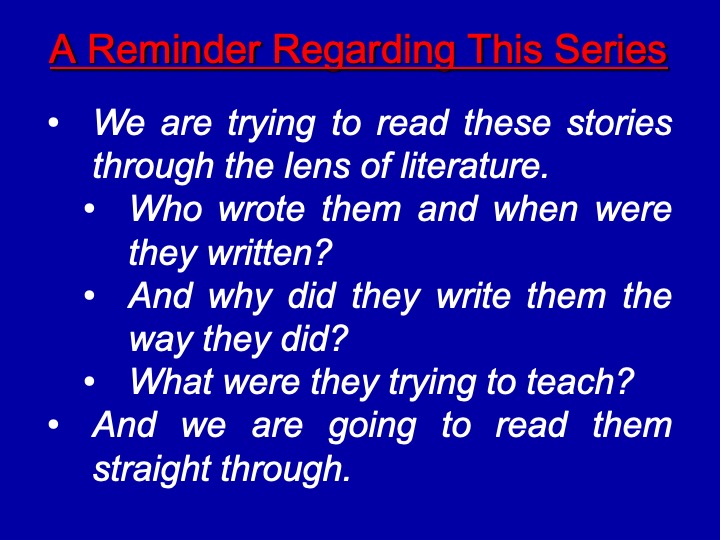
Solomon and Contradictions
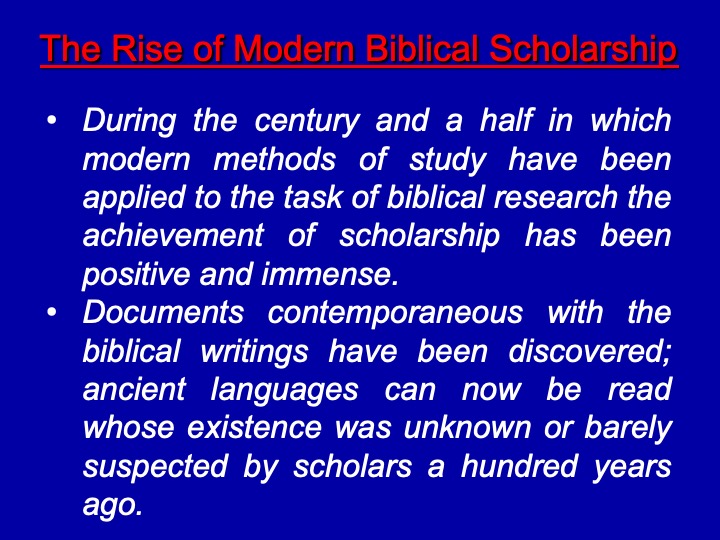
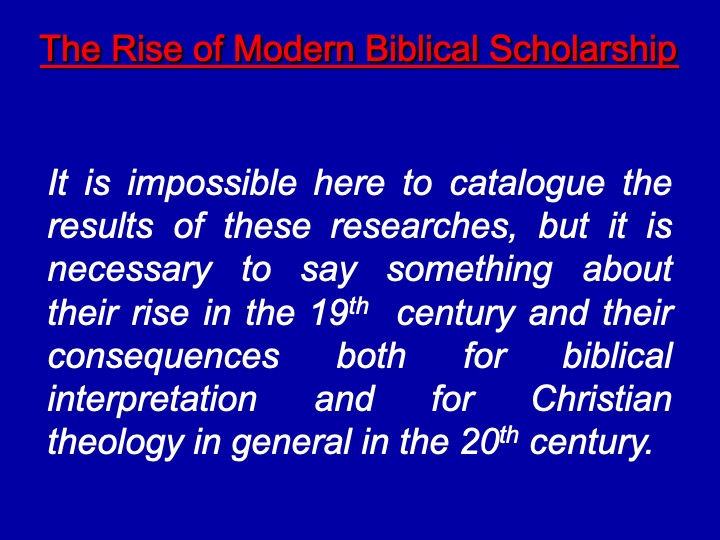
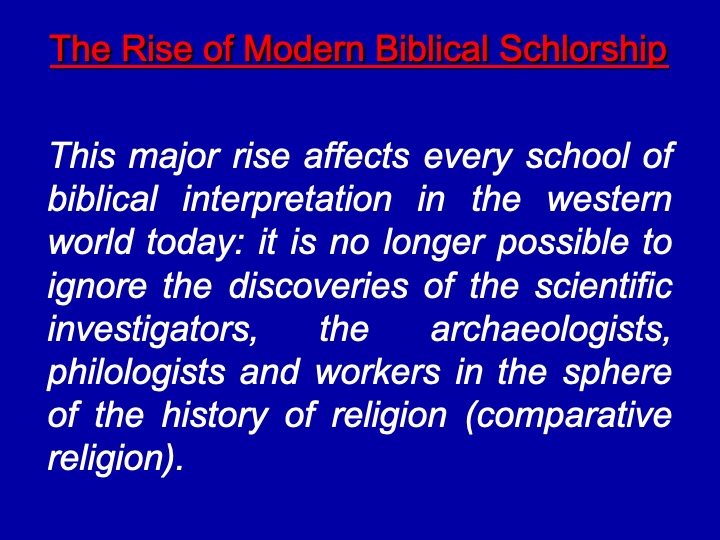

Solomon And Contradictions
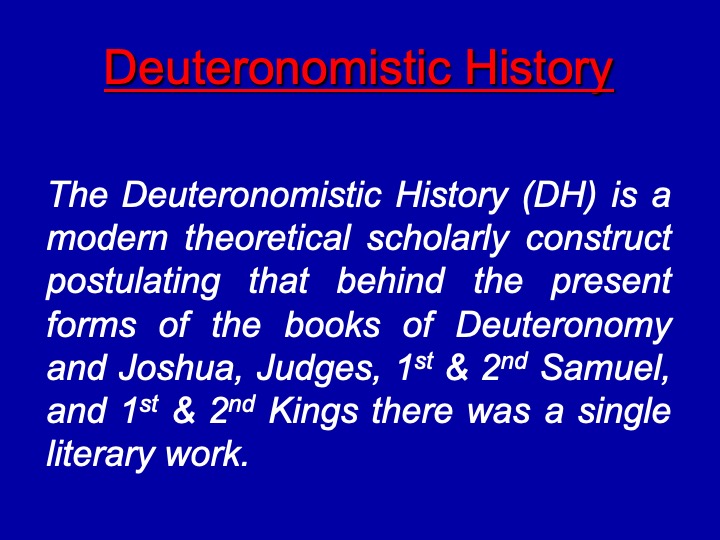
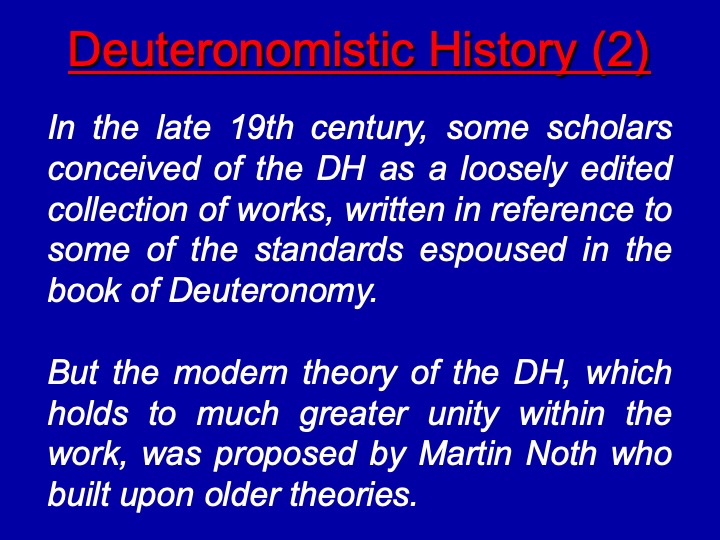
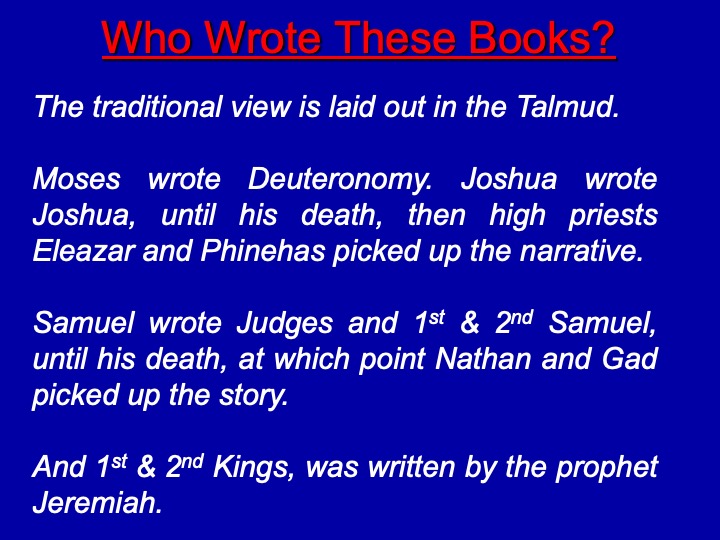
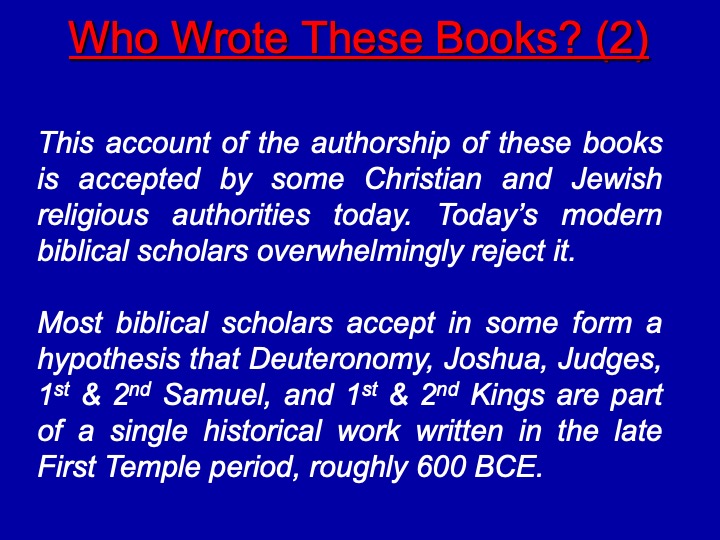
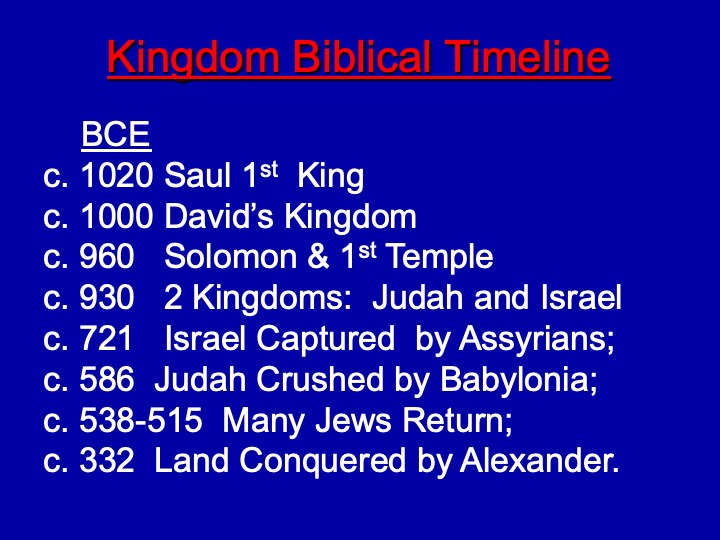
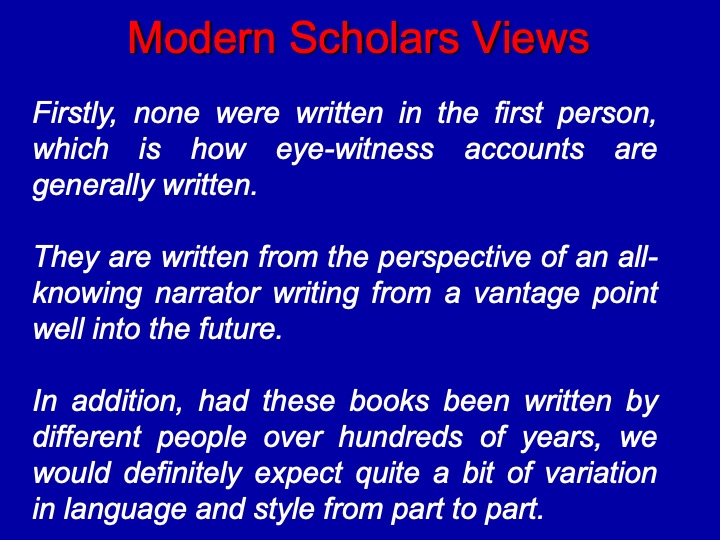
Solomon And Contradictions
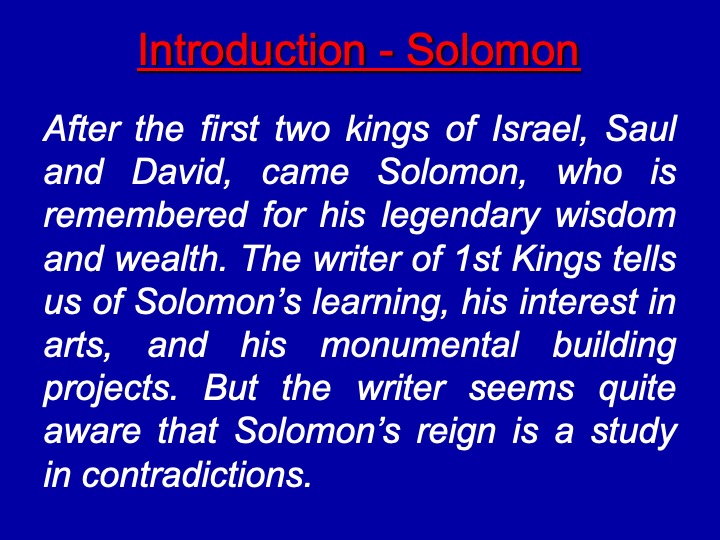

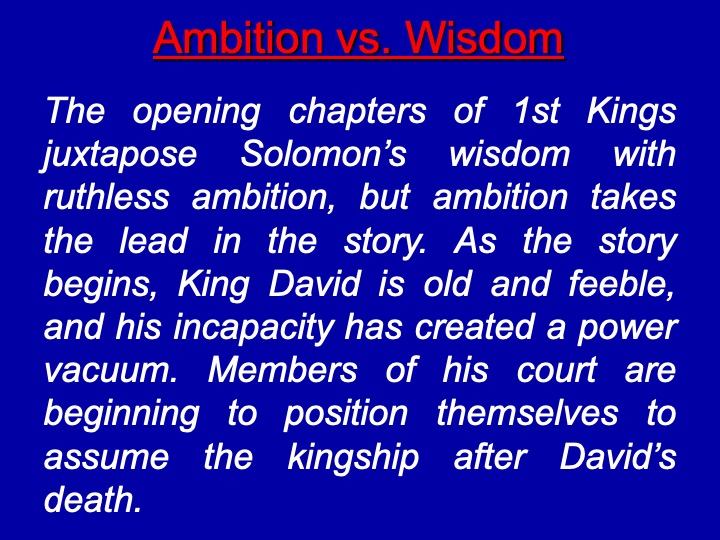


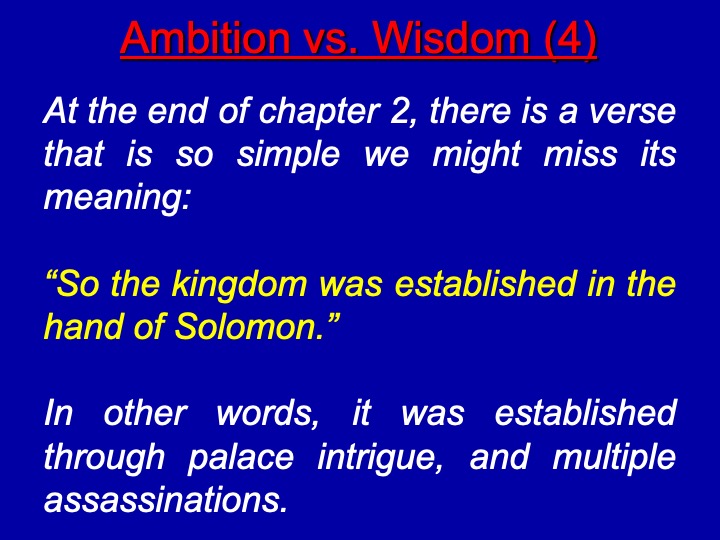
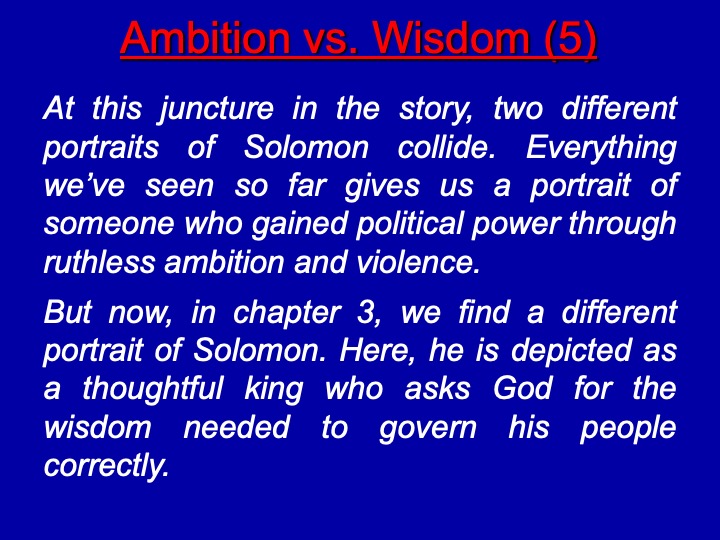

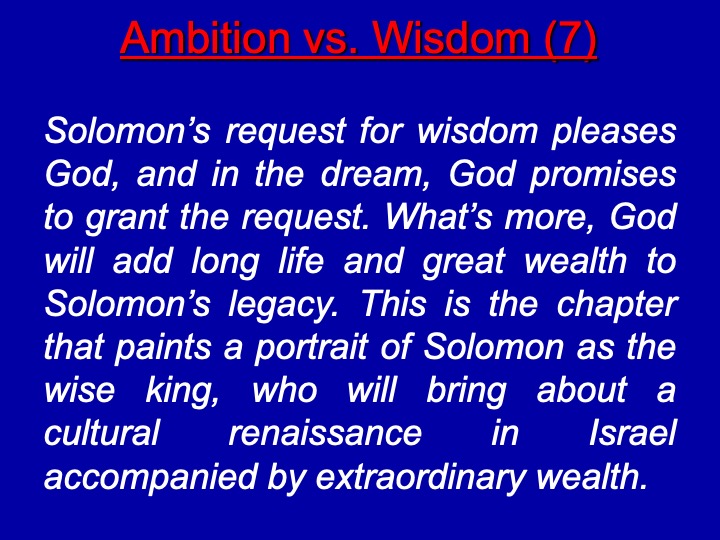
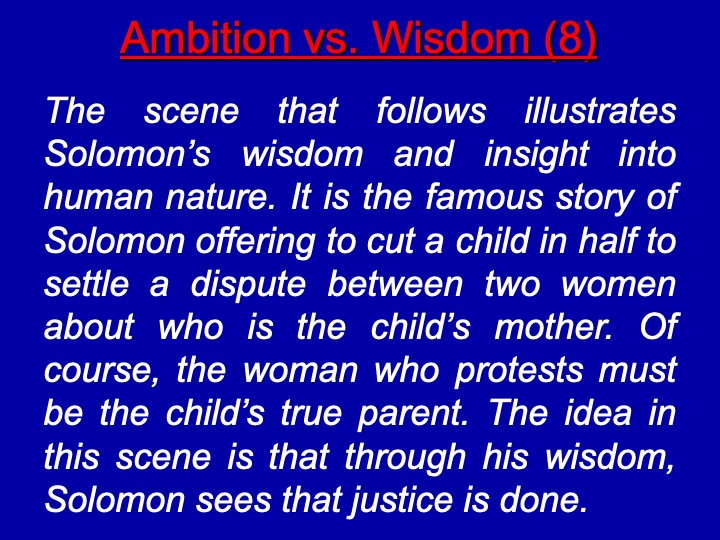
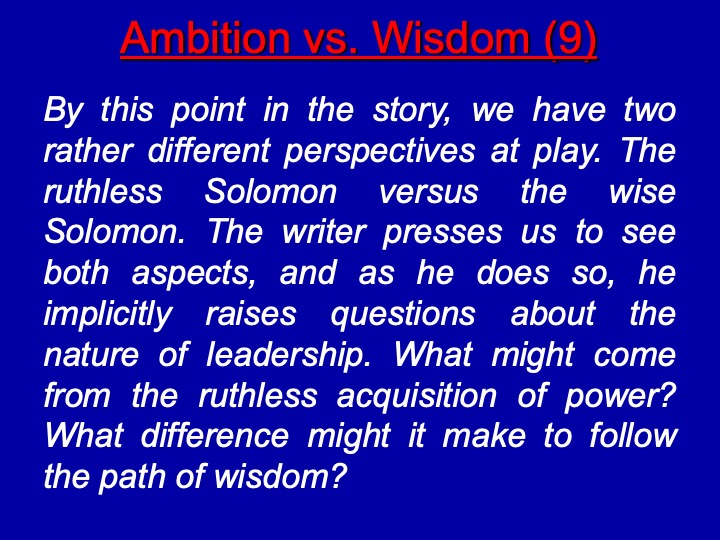
Solomon And Contradictions
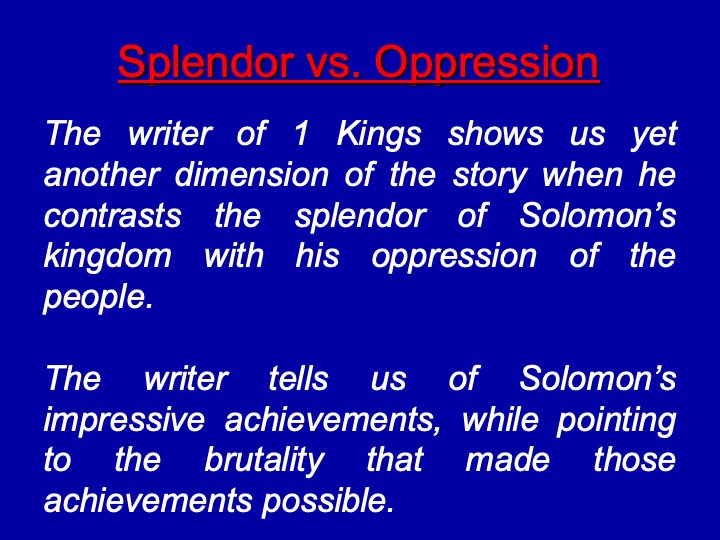
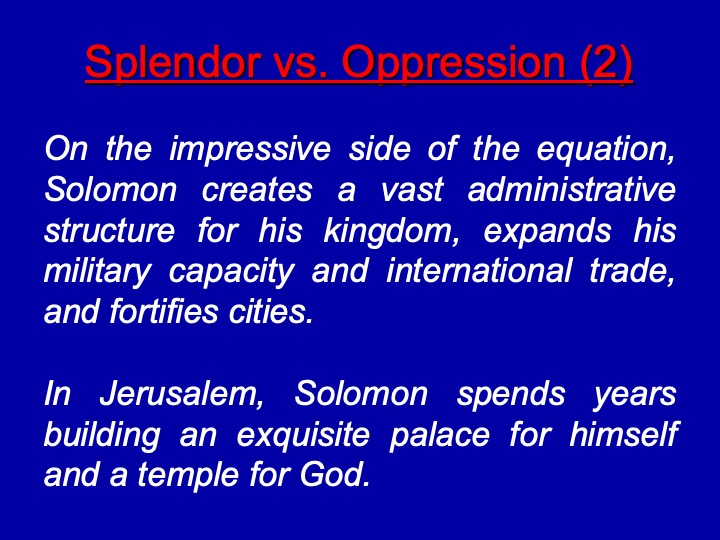
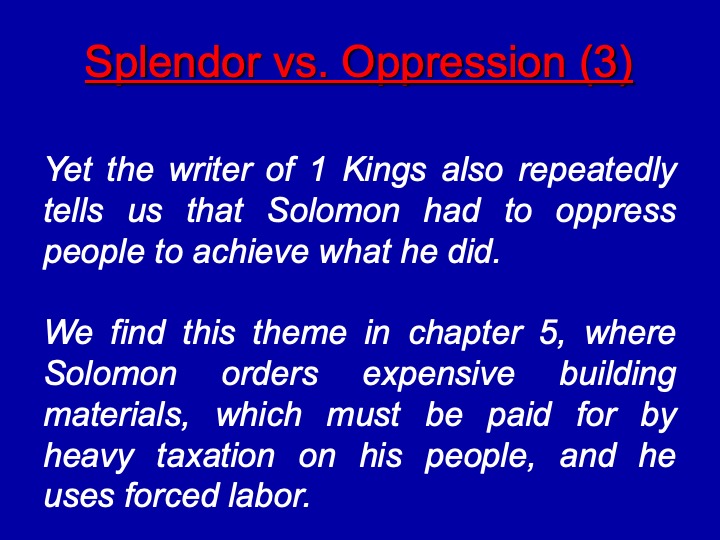
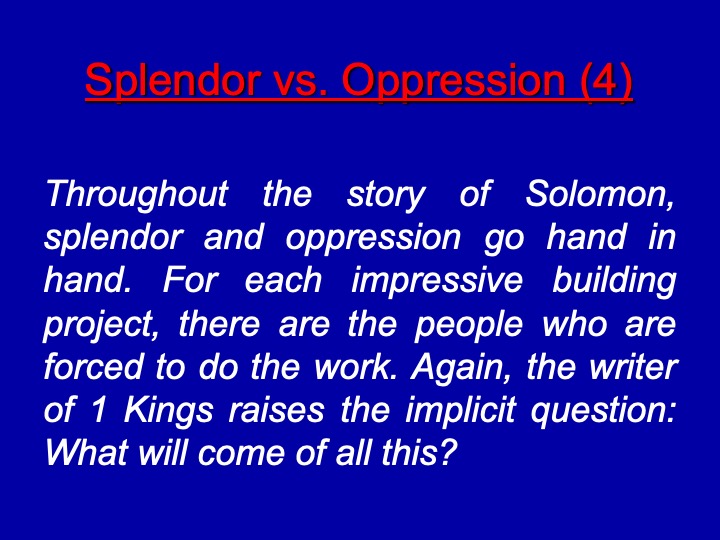
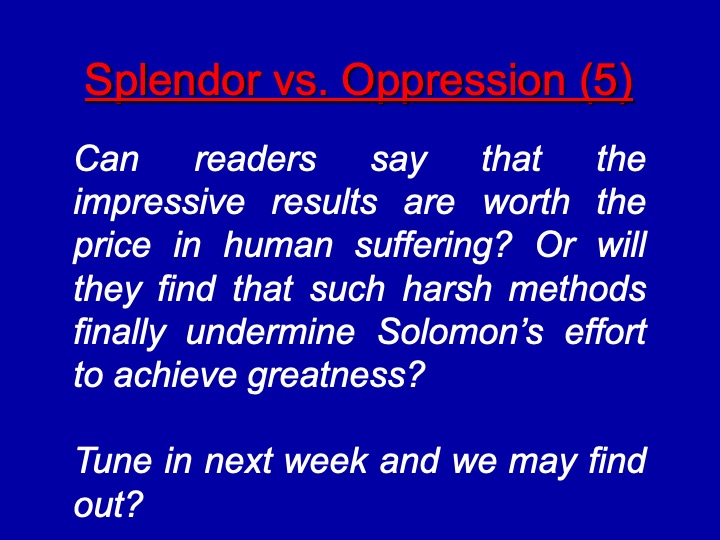

Solomon and Contradictions - Lesson 1
Links
< Home Page> < Solomon and Contradictions Menu > < Top of Page >
Solomon 1 – the Text
A Study in Contradictions
Introduction
OK, what is this about?
We began this year with a goal of reviewing the stories of the first three kings of the United Monarchy of Israel before its breakup into a Northern Kingdom (Israel) and a Southern Kingdom (Judah).
The Three Stories
Saul – the Tragic King.
(February)
David and Nation Building.
(May-June)
Solomon – A Study in Contradictions.
(Now)
A Reminder Regarding This Series
• We are trying to read these stories through the lens of literature.
• Who wrote them and when were they written?
• And why did they write them the way they did?
• What were they trying to teach?
• And we are going to read them straight through.
The Rise of Modern Biblical Scholarship
• During the century and a half in which modern methods of study have been applied to the task of biblical research the achievement of scholarship has been positive and immense.
• Documents contemporaneous with the biblical writings have been discovered; ancient languages can now be read whose existence was unknown or barely suspected by scholars a hundred years ago.
• It is impossible here to catalogue the results of these researches, but it is necessary to say something about their rise in the 19th century and their consequences both for biblical interpretation and for Christian theology in general in the 20th century.
• This major rise affects every school of biblical interpretation in the western world today: it is no longer possible to ignore the discoveries of the scientific investigators, the archaeologists, philologists and workers in the sphere of the history of religion (comparative religion).
Source Criticism
Numerous approaches have been used historically in bible scholarship. Source Criticism seeks to identify independent source documents behind the present biblical texts.
This approach tends to try to identify key questions such as 1) who wrote these texts, 2) when were they written, and 3) why were they written in this way.
Deuteronomistic History
The Deuteronomistic History (DH) is a modern theoretical scholarly construct postulating that behind the present forms of the books of Deuteronomy and Joshua, Judges, 1st & 2nd Samuel, and 1st & 2nd Kings there was a single literary work.
In the late 19th century, some scholars conceived of the DH as a loosely edited collection of works, written in reference to some of the standards espoused in the book of Deuteronomy.
But the modern theory of the DH, which holds to much greater unity within the work, was proposed by Martin Noth who built upon older theories.
Who Wrote These Books?
The traditional view is laid out in the Talmud.
Moses wrote Deuteronomy. Joshua wrote Joshua, until his death, then high priests Eleazar and Phinehas picked up the narrative.
Samuel wrote Judges and 1st & 2nd Samuel, until his death, at which point Nathan and Gad picked up the story.
And 1st & 2nd Kings, was written by the prophet Jeremiah.
This account of the authorship of these books is accepted by some Christian and Jewish religious authorities today. Today’s modern biblical scholars overwhelmingly reject it.
Most biblical scholars accept in some form a hypothesis that Deuteronomy, Joshua, Judges, 1st & 2nd Samuel, and 1st & 2nd Kings are part of a single historical work written in the late First Temple period, roughly 600 BCE.
Kingdom Biblical Timeline
BCE
c. 1020 Saul 1st King
c. 1000 David’s Kingdom
c. 960 Solomon & 1st Temple
c. 930 2 Kingdoms: Judah and Israel
c. 721 Israel Captured by Assyrians;
c. 586 Judah Crushed by Babylonia;
c. 538-515 Many Jews Return;
c. 332 Land Conquered by Alexander.
Modern Scholars Views
Firstly, none were written in the first person, which is how eye-witness accounts are generally written.
They are written from the perspective of an all-knowing narrator writing from a vantage point well into the future.
In addition, had these books been written by different people over hundreds of years, we would definitely expect quite a bit of variation in language and style from part to part.
Introduction – Solomon
After the first two kings of Israel, Saul and David, came Solomon, who is remembered for his legendary wisdom and wealth. The writer of 1st Kings tells us of Solomon’s learning, his interest in arts, and his monumental building projects. But the writer seems quite aware that Solomon’s reign is a study in contradictions.
We will explore those contradictions and ask why such a story might continue to engage our imaginations.
How can the same story present both wisdom and ruthless ambition, splendor and oppression, and religious devotion mixed with infidelity? In the end, we will see Solomon’s son making a fateful decision about which side of his father’s legacy he would claim and carry forward.
Ambition vs. Wisdom
The opening chapters of 1st Kings juxtapose Solomon’s wisdom with ruthless ambition, but ambition takes the lead in the story. As the story begins, King David is old and feeble, and his incapacity has created a power vacuum. Members of his court are beginning to position themselves to assume the kingship after David’s death.
In competition are David’s eldest living son, Adonijah, and Solomon, the son of David and Bathsheba. Both put together coalitions of influential supporters. Ultimately, Solomon wins out, and he promises that if Adonijah proves to be no threat, he will be allowed to live. But if Solomon suspects Adonijah of disloyalty, he will kill him, which we will see, is exactly what happens.
After David’s death, Adonijah asked if he could marry the young woman who had been David’s nurse. Solomon saw this as a political move that might give Adonijah prestige in the public eye. Thus, Solomon immediately ordered that Adonijah be assassinated. He also ordered the assassination of the military commander and the arrest of the priest who had supported Adonijah.
At the end of chapter 2, there is a verse that is so simple we might miss its meaning:
“So the kingdom was established in the hand of Solomon.”
In other words, it was established through palace intrigue, and multiple assassinations.
At this juncture in the story, two different portraits of Solomon collide. Everything we’ve seen so far gives us a portrait of someone who gained political power through ruthless ambition and violence.
But now, in chapter 3, we find a different portrait of Solomon. Here, he is depicted as a thoughtful king who asks God for the wisdom needed to govern his people correctly.
Solomon has a dream, and in the dream God says, “Ask what I should give you.” Solomon responds with gratitude for the steadfast love that God showed to his father, David. He speaks about the challenges of governing and asks God to give him an understanding mind. Solomon prays for the wisdom to distinguish good from evil in order that he might govern the people well.
Solomon’s request for wisdom pleases God, and in the dream, God promises to grant the request. What’s more, God will add long life and great wealth to Solomon’s legacy. This is the chapter that paints a portrait of Solomon as the wise king, who will bring about a cultural renaissance in Israel accompanied by extraordinary wealth.
The scene that follows illustrates Solomon’s wisdom and insight into human nature. It is the famous story of Solomon offering to cut a child in half to settle a dispute between two women about who is the child’s mother. Of course, the woman who protests must be the child’s true parent. The idea in this scene is that through his wisdom, Solomon sees that justice is done.
By this point in the story, we have two rather different perspectives at play. The ruthless Solomon versus the wise Solomon. The writer presses us to see both aspects, and as he does so, he implicitly raises questions about the nature of leadership. What might come from the ruthless acquisition of power? What difference might it make to follow the path of wisdom?
Splendor vs. Oppression
The writer of 1 Kings shows us yet another dimension of the story when he contrasts the splendor of Solomon’s kingdom with his oppression of the people.
The writer tells us of Solomon’s impressive achievements, while pointing to the brutality that made those achievements possible.
On the impressive side of the equation, Solomon creates a vast administrative structure for his kingdom, expands his military capacity and international trade, and fortifies cities.
In Jerusalem, Solomon spends years building an exquisite palace for himself and a temple for God.
Yet the writer of 1 Kings also repeatedly tells us that Solomon had to oppress people to achieve what he did.
We find this theme in chapter 5, where Solomon orders expensive building materials, which must be paid for by heavy taxation on his people, and he uses forced labor.
Throughout the story of Solomon, splendor and oppression go hand in hand. For each impressive building project, there are the people who are forced to do the work. Again, the writer of 1 Kings raises the implicit question: What will come of all this?
Can readers say that the impressive results are worth the price in human suffering? Or will they find that such harsh methods finally undermine Solomon’s effort to achieve greatness?
Tune in next week and we may find out?